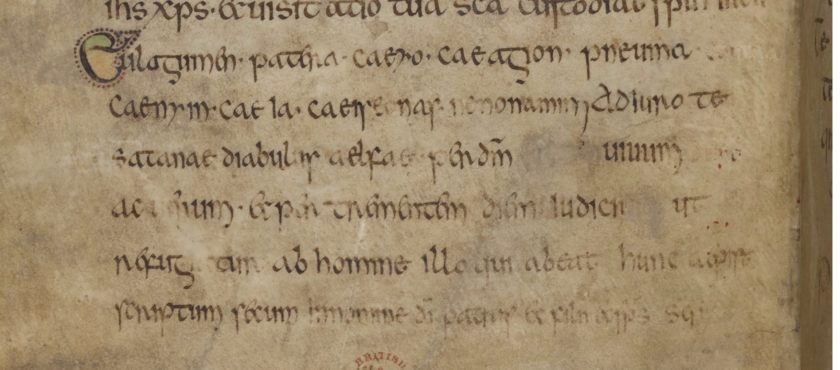The manuscript containing one of the earliest known references to the word “elf” has been digitised by the British Library and is available to view online.
Royal MS 2 A XX is a late-eighth-century royal prayerbook from the Kingdom of Mercia.
On the lower half of f.4v is a prayer which involves an exorcism: “I conjure you, devil of Satan, of (an/the) elf, through the living and true God […] that he is put to flight from that person”.1

This could be a reference to an elf or some being with the name “Elf”. Either way, the association with evil is clear. This may reflect pre-Christian beliefs in Anglo-Saxon society, with the scribe using “elf” to help his audience understand Satan with a comparison to a more familiar concept.
That “elf” was used to refer to an evil creature (or creatures) in Anglo-Saxon England should come as no surprise to those familiar with the following line and a half from Beowulf:
eotenas ond ylfe ond orcnéäs
swylce gígantas
In Letter 236, Tolkien commented that “[i]n all Old English poetry ‘elves’ (ylfe) occurs once only, in Beowulf, associated with trolls, giants, and the Undead, as the accursed offspring of Cain.” That Tolkien could not bear such a negative association is clear from his prose translation of the above passage: “ogre, goblins, and haunting shapes of hell”.2
Read more about Elves and Anglo-Saxon manuscripts on the British Library’s medieval manuscripts blog.
- Translation from Alaric Hall, Elves in Anglo-Saxon England (Boydell, 2007), p. 72.
- J.R.R Tolkien, Beowulf: A Translation and Commentary, together with Sellic Spell, ed. Christopher Tolkien (London, 2014).